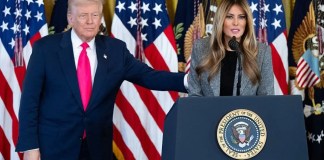The Federal Reserve lowered interest rates by a quarter of a percentage point on Wednesday, delivering the long-awaited cut which Powell hinted at last month and President Donald Trump had been hounding him for since he took office.
The decision, like the one made in last month’s meeting, was not unanimously supported. Stephen Miran, Trump’s pick to join the Fed, voted in favor of a half-point reduction.
The first cut since December, the decision punctuates growing concerns about a dramatically slowed labor market and the increasingly fraught and unusual politics surrounding the central bank.
Investors and economists widely anticipated the shift, which takes the Fed’s benchmark rate down by 25 basis points. Wall Street had already priced in a near-certainty of the cut, with futures markets assigning just a slim chance of a larger half-point move.
“This is the start of a cutting cycle,” Chris Brigati, chief investment officer at SWBC, told CNN. “The Fed is pivoting from restrictive to stimulative policy in response to a cooling employment picture.”
Most of the Fed officials forecast the Fed lowering the interest rates by another half a percentage point this year, meaning that each of the two remaining meetings would see a quarter-point cut. However, seven governors out of 19 forecasted fewer cuts this year, suggesting some divisiveness for the winter.
Jobs on the brink
The Fed’s rate cut doesn’t necessarily reflect a victory over inflation, which has remained stubbornly sticky, or that the economy has completely weathered the tariff storm. Rather, it comes amid mounting evidence of a cooling jobs market that risks slipping toward outright recession.
Recent data has raised red flags: In August, the U.S. added only about 22,000 jobs, a steep drop from earlier months, with the unemployment rate ticking up to 4.3%, the highest since 2021.
Economists like Mark Zandi have even suggested the U.S. may already be sliding into a “jobs recession,” given the persistently weak labor gains. The trend over the summer has been down: average monthly job growth for the three months ending July was only around 28,000, compared to nearly 196,000 per month earlier in the year.
A Moody’s Analytics model now assigns nearly a 50% chance of a recession in the next 12 months, reflecting how much weight Fed officials are putting on these worsening labor metrics.
What remains uncertain is whether Wednesday’s 25-basis-point rate cut marks the start of a full easing cycle — as markets have been gaming out — or just a one-time adjustment. Key future labor reports, like the Sept. non-farm payrolls report or JOLTS, will help decide that. And in an environment where Trump continuously threatens the Federal Reserve’s independence, Powell is under pressure by the markets to show that decisions are driven by economic necessity, not politics.
Political backdrop
The decision comes as President Donald Trump continues to exert extraordinary pressure on the central bank. Trump has lambasted Fed Chair Jerome Powell for months, attempted – unsuccessfully – to oust Governor Lisa Cook, and this week saw his economic adviser, Stephen Miran, sworn in as a Fed governor.
“This is not a normal moment, because Trump is sort of having a beauty contest for the Fed chair,” Harvard economist Kenneth Rogoff told The Wall Street Journal. Powell’s term expires in May, and the succession battle has already spilled into policy debates.
Loretta Mester, the former Cleveland Fed president, warned that political jockeying risks “undermining the institution” by blurring the line between policy disagreement and partisan loyalty tests.
Markets
Some traders are already hedging against the possibility of a half-point “catch-up” cut before year-end. Bloomberg data shows rising bets on as much as 70 basis points of easing by December.
“Markets like rate cuts that are a luxury, not an emergency,” Jeff Buchbinder, chief equity strategist at LPL Financial, told CNN. “As long as the Fed frames this as proactive, with recession risk still low, the backdrop for stocks remains constructive.”
Great Job Eva Roytburg & the Team @ Fortune | FORTUNE Source link for sharing this story.





